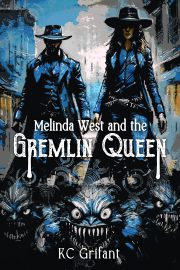An Introduction to Middle Grade and Young Adult Fiction, Part 1: Definitions
by Malinda Lo
 For writers who are interested in writing middle grade or young adult fantasy or science fiction, the first step is puzzling out what exactly those categories mean. Science fiction and fantasy, after all, has a long tradition of featuring young protagonists — including such classics as Dragonflight by Anne McCaffrey, Pawn of Prophecy by David Eddings, and Arrows of the Queen by Mercedes Lackey — even if those novels weren’t originally published as middle grade or young adult books.
For writers who are interested in writing middle grade or young adult fantasy or science fiction, the first step is puzzling out what exactly those categories mean. Science fiction and fantasy, after all, has a long tradition of featuring young protagonists — including such classics as Dragonflight by Anne McCaffrey, Pawn of Prophecy by David Eddings, and Arrows of the Queen by Mercedes Lackey — even if those novels weren’t originally published as middle grade or young adult books.
But these days, following the successes of Harry Potter and The Hunger Games, middle grade and young adult publishing is a thriving category in its own right, with sci-fi and fantasy one of the most popular genres within MG and YA. To help writers figure out what makes a middle grade a middle grade, and what makes a young adult a young adult, we’ve put together this post to outline the basics.
Who are “we”? We’re members of SFWA’s newest experiment, a special interest group focusing on SFWA members who write MG and YA sci-fi and fantasy. We’ve surveyed our editors and agents to ask them how they define MG and YA, and in this post we’re sharing their thoughts with you. In subsequent posts, we’ll tackle the thorny issue of potentially controversial content (what’s permitted and what’s not), and give you recommendations of MG and YA books you can read to get up to speed on the market today.
How do you define “middle grade” and “young adult”?
Joe Monti is a literary agent with the Barry Goldblatt Literary Agency. His clients include SFWA members Jenn Reese (Above World) and William Alexander (the recent National Book Award-winning Goblin Secrets). Joe’s definition:
“The publishing guidelines are traditionally for readers from ages 8-12 for middle grade and 12 & up for YA. My experience, particularly as a retailer cautions that these are soft and it’s closer to 7-11 and 11-17. But adult readership of young adult fiction can be as high as 40% for the most popular titles, but generally makes up 20%-25%.”
Lisa Yoskowitz is an Editor at Disney-Hyperion Books, where she edits SFWA member Cinda Williams Chima‘s novels. Lisa’s definition:
“I think that these definitions are fairly simple: middle grade books feature pre-teen characters in situations of interest to 8-12 year olds, and YA novels feature teen protagonists in situations of interest to teen readers. The best kind of books leave room for crossover to an older, or sometimes slightly younger, audience. YA and middle grade books should speak to their respective target audience, with an accessible voice that truly speaks to the reader and doesn’t talk down to them.”
Amanda Rutter is an Editor at Strange Chemistry, the newly launched global YA imprint of UK-based Angry Robot Books. Their launch list includes Blackwood by Gwenda Bond, which was recently put into development at MTV. Amanda’s definition:
“Middle grade is very much about the external, in my opinion. The protagonist reacts to external situations and events, which leads to adventurous stories, and there is little time spent in the characters’ heads. Think books like Percy Jackson and Skulduggery Pleasant. On the other hand, YA is often much more introspective, and the protagonist exerts their influence on the events in the novel. Think first person perspective and lots of use of the word ‘I’. Of course, there are always exceptions to every rule!”
Abigail Ranger is Senior Editor at HarperCollins Children’s Books. While she was at Disney-Hyperion, she edited SFWA member Cinda Williams Chima’s bestselling The Gray Wolf Throne and The Crimson Crown. Abigail’s definition:
“‘Middle grade’ and ‘young adult’ describe audiences, not genres, because a tremendous variety of books fall in each category. The core audience for middle grade is 8 to 12-year-olds, and young adult is 12 to 18. I say ‘core audience’ because readers of all ages enjoy these books, but the writing has to speak to kids and/or teens first.”
Stacy Whitman is Editorial Director of Tu Books, a publisher that specializes in fantasy and science fiction with diverse characters and settings. One of Tu’s most recent titles is Diverse Energies, an anthology of dystopian science fiction edited by Joe Monti and SFWA member Tobias Buckell, which features short stories by SFWA members Ursula K. Le Guin, Paolo Bacigalupi, Malinda Lo, Cindy Pon, and more. Stacy’s definition:
“Middle grade is for children ages 8 to 12. It is generally shorter than YA (though that can vary with SFF) to account for younger children’s shorter attention spans, and though it doesn’t necessarily shy away from tough subjects, it generally avoids the graphic depiction of them. Romance in MG will tend more toward the ‘puppy love’ phase than full-on dating.
“Young adult is aimed at readers 12 to 18 (and up), which is a wide developmental range. YA is generally thought of most generally as ‘anything with a teenaged character living in the moment’ (as opposed to remembering back on those years sentimentally from the POV of an older adult narrator). Some break down YA further into two fuzzy categories, young YA and edgy/older YA. Young YA usually features characters not much older than middle grade characters (though they might be older if it’s a ‘clean read’) and the plot/content will be a little more mature than that found in MG but still shy away from graphic depiction of edgy subjects, even if it tackles them in theme (children tend to read up, so a 12- or 13-year-old will likely be a middle-grade character while a 14-year-old in a somewhat tame tale might be a YA character). Edgier YA won’t shy away from more graphic depiction of sex, won’t shy away from using strong language, and will sometimes be gory in violence. Edgier YA characters will often be older teens, but not necessarily.”
For Further Reading
Cheryl Klein, an Editor at Scholastic who worked on the Harry Potter series, has blogged extensively about young adult and middle grade. Here’s an excerpt from one of her blog posts on defining “young adult”:
“A YA novel is centrally interested in the experience and growth of its teenage protagonist(s), whose dramatized choices, actions, and concerns drive the story, and it is narrated with relative immediacy to that teenage perspective.”
For more, read Cheryl Klein’s post, “Theory: A Definition of YA Literature.”
Michael Stearns, agent and founder of Upstart Crow Literary Agency, specializes in children’s books. According to Stearns, these are some characteristics of middle grade books:
* “Middle grade novels tend to be shorter.”
* “Middle grade novels tend to have main characters who are the age of—or slightly older than—the target reader.”
* “Middle grade novels tend to be more outwardly focused: Their plot of events, of things happening to the character, is more important over the course of the book than what happens within the character.”
* “Middle grade novels tend to have a simpler vocabulary and a simpler sentence structure.”
* “Middle grade novels tend to have a single inciting element—the thing that sets the comfortable, given world a-kilter.”
To find out how Stearns sees middle grade in comparison to YA, read his whole post, “Middle Grade? Teen? Where Do You Draw the Line?”
Molly O’Neill, a children’s and young adult editor at HarperCollins, and Michael Bourret, an agent at Dystel & Goderich Literary Management, discussed middle grade and young adult in a blog post earlier this year. Here’s an excerpt:
“MB: It seems only natural to start with this question (plus, you told me to): What is middle grade? It seems a much simpler question at first glance. If we’re looking at bookstore sections, it’s the 9 – 12 part of B&N. These aren’t chapter books or early readers, which are usually quite short, often in series, usually contain education content, and are aimed at a slightly younger audience, 6 – 8 year olds. But they’re also not teen novels, which are usually categorized as 12 and up (though can be 14 and up when there’s more ‘content’). YA novels often deal with more ‘controversial’ subject matter, and often involve romantic story lines. But that brings us back to the question, what is middle grade? We can define it by age group, but I’d argue that classifying by content is more difficult.”
“MO: As you know, I have a marketing background, which means that whether or not I intend it, one of the first things my brain starts thinking about for a book is its readership: who is a book FOR? What kind of reader is it going to reach, and how? Maybe instead of asking ‘What is middle grade?’ it’s easier to think about ‘Who is the middle grade reader, and what is he/she looking for in a book?'”
To continue reading their discussion, check out the whole post, “Everything you ever wanted to know about middle grade…and were willing to ask.”
Last but not least, visit YA Highway’s collection of links that tackle the definitions of and distinctions between middle grade and young adult from many different angles.
Questions?
Have more questions? Feel free to ask in the comments and SFWA’s MG and YA writers will attempt to clear things up. Additionally, SFWA members are always free to raise issues about MG and YA in the SFWA Forums in our ongoing YA and Middle Grade SF/Fantasy Discussion.


